The distinctive click of a coasting mountain bike is the sound of engineering at work—a precise mechanical conversation between your pedaling input and the trail. At the heart of this interaction lies the rear hub's engagement mechanism, a critical component that dictates responsiveness, reliability, and ride feel. For riders looking to upgrade their mountain bike hubs, understanding the differences between ratchet, pawl, and star ratchet systems is key. Let's demystify these mechanisms and see how hubs like the Trifox M821 Boost implement this technology.
The Fundamentals: Engagement Points and the Pursuit of Zero Lag
The core function of any freehub mechanism is to allow the wheel to spin freely when coasting while instantly transferring power when you pedal. The measure of this instantaneity is called Points of Engagement (POE). A hub with more engagement points has a smaller “dead zone” or free rotation angle before power transfers. For example, a 36-tooth hub engages every 10 degrees, while a 60-tooth hub engages every 6 degrees, offering noticeably quicker pickup. This is the first critical spec to examine in a bicycle wheel hub.
The Mechanism Showdown: Pawls vs. Star Ratchet
1. The Traditional Pawl System
This common design uses small, spring-loaded tabs (pawls) that click outward to engage with a notched ring inside the hub. It can offer very high POE and a classic loud sound, but the small contact area of individual pawls can be a stress point under high torque.
2. The Star Ratchet System
This system, pioneered by brands like DT Swiss, uses two solid, star-shaped ratchet rings pressed together by a spring. It boasts a massive contact area for incredible durability and is typically much quieter. While traditionally offering lower POE, modern versions have significantly increased engagement points.
The Trifox M821 Boost Approach: Precision Pawls, Engineered for Strength
The Trifox M821 Boost Hub employs a high-performance, multi-pawl system that intelligently balances instant engagement with trail-ready durability. Here's why its design stands out:
• High-POE Foundation & Option: The hub comes standard with a 36-tooth ratchet for reliable 10-degree engagement. For riders craving the fastest pickup, an optional 60-tooth upgrade slashes the engagement angle to just 6 degrees.
• Durability First: Instead of using fragile components for high POE, Trifox focuses on robustness. The precision-machined ratchet teeth and strong pawl springs ensure the mechanism withstands repeated trail shocks.
• Premium Construction: The entire hub is crafted from AL7075 aluminum and machined on a 5-axis CNC for perfect tolerances, creating a stiff, reliable platform. Sealed bearings keep everything running smoothly.
Choosing Your Mechanism: A Rider's Guide
The best hub mechanism for you depends on your riding style:
• Cross-Country & Trail Riders (Prioritizing Responsiveness): Benefit most from higher POE (54T+). The immediate engagement helps with technical climbs and quick power bursts. A quality multi-pawl system like the Trifox M821 with its 60T option is ideal.
• Aggressive Trail & Enduro Riders (Prioritizing Durability): Your priority is a mechanism that survives brutal descents and high torque. A star ratchet system is the gold standard, but a robust, well-made pawl system with a moderate POE (like the 36T standard on the M821) is also an excellent, often more affordable, choice.
• Long-Distance & Bikepacking (Prioritizing Reliability & Maintenance): For remote adventures, simplicity and ease of service are key. A star ratchet system is famously easy to service. A simple, proven 2- or 3-pawl system with sealed bearings also offers great reliability.
Conclusion: The Heart of the Wheel
Your bicycle wheel hub is a precision power-transfer device. Whether you choose the lightning-fast click of a high-POE pawl system or the silent force of a star ratchet, understanding the mechanism inside empowers your choice. The Trifox M821 Boost Hub offers a smart balance: the choice between durable 36-tooth engagement and an ultra-responsive 60-tooth option, all housed in a well-made, lightweight package. It proves you don't need to sacrifice strength for speed, making it a versatile and high-value cornerstone for any serious mountain bike wheelset.

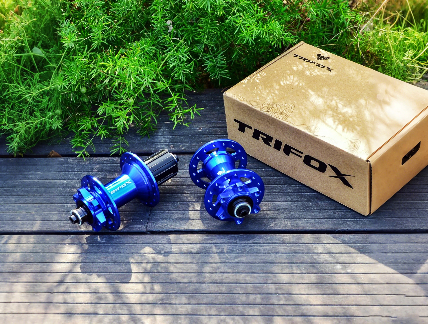
When it comes to mountain bike performance, the hub is one of the most critical yet often overlooked components. While riders frequently focus on upgrading frames or suspension, the humble hub plays a vital role in how your bike accelerates, maintains speed, and handles technical terrain. If you're experiencing any of these five issues, it might be time to consider the Trifox M827 Mountain Bike Hub for your next upgrade.
1. Poor Engagement and Power Loss
Modern mountain bike hubs feature high engagement points for instant power transfer. If you're experiencing noticeable delay between pedaling and drive response, or feeling like your power isn't translating immediately to forward motion, your hub's internal mechanism may be worn out. The Trifox M827 hub with its precise 54-tooth engagement system ensures immediate power transfer, making it ideal for technical climbs and sudden acceleration.
2. Unusual Noises During Riding
While some hub noise is normal, new or increasingly loud sounds often indicate problems. Grinding, crunching, or irregular clicking noises suggest that bearings may be contaminated or internal mechanisms are failing. The M827 MTB hub features sealed bearings and precision machining to provide smooth, quiet operation in all riding conditions.
3. Visible Play or Wobble in the Wheel
If you can feel or see side-to-side movement in your wheel when it's securely mounted, this indicates hub bearing wear. This play affects riding stability and can lead to unsafe handling. The Trifox bike hub is engineered with superior bearing seals and precise tolerances to eliminate play while maintaining smooth rotation.
4. Rough Rotation and Increased Drag
A properly functioning hub should allow the wheel to spin freely with minimal resistance. If your wheel stops spinning quickly or feels rough when rotating, the bearings may be damaged. This friction creates drag that slows you down. The M827 mountain bike hub features low-friction seals and high-quality bearings to maintain smooth spinning and reduce rotational drag.
5. Frequent Maintenance Requirements
High-quality hubs are designed to require minimal maintenance. If you find yourself constantly adjusting or repairing your current hub, it's likely reaching the end of its service life. The Trifox M827 is built for durability with minimal maintenance requirements, saving you time and frustration while providing reliable performance ride after ride.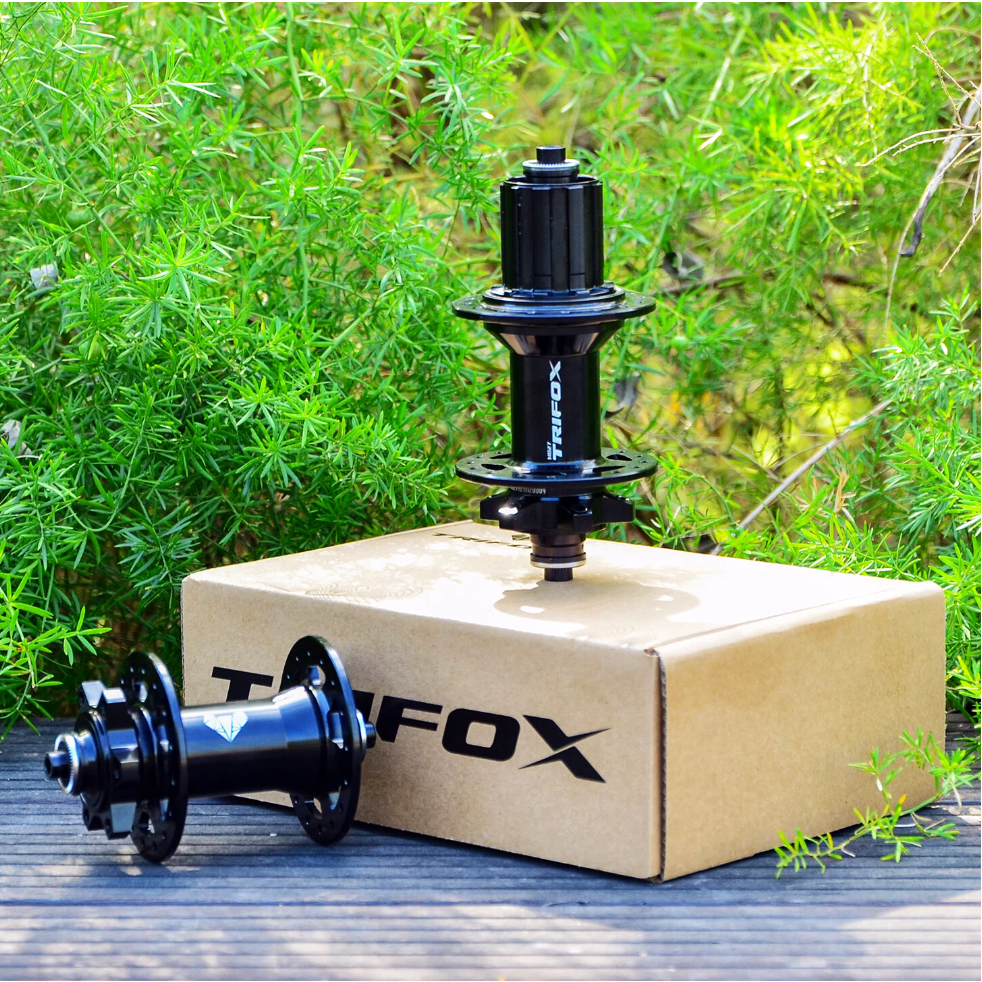
Why Choose Trifox M827 Hub?
The Trifox M827 Mountain Bike Hub represents the perfect balance of performance, reliability, and value. With its 54-tooth rapid engagement mechanism, sealed bearing system, and lightweight construction, it delivers professional-level performance for serious riders. Whether you're tackling technical cross-country trails or aggressive all-mountain routes, this hub provides the instant engagement and reliable performance you need.
Compatible with most modern mountain bike standards and available in multiple axle configurations, the M827 makes an excellent upgrade for riders looking to improve their bike's performance without breaking the bank. The hub's durable construction ensures it can handle the demands of aggressive trail riding while maintaining smooth operation.
Don't let an aging hub limit your riding potential. Recognizing these five signs early will help you maintain optimal performance and get the most from your mountain bike. Upgrading to the Trifox M827 Mountain Bike Hub is one of the most cost-effective ways to transform your bike's responsiveness and reliability. Experience the difference that quality engineering makes in your next ride.

Your disc brake wheelset's hub is the critical link between your drivetrain and your stopping power. Choose wrong, and you'll face compatibility headaches or costly fixes. Here's how to match your hub to your drivetrain flawlessly, using the Trifox T11 Centerlock Road Hub as an example.
1. Axle Standard First:
- What it is: How the hub attaches to your frame (fork/rear triangle). Common standards:
Road: Quick Release (QR), 12x100mm (front), 12x142mm (rear) thru-axle.
Gravel: Often 12x100mm front, 12x142mm rear, but sometimes Boost (110/148mm) for wider tires.
- Why it matters: Your frame dictates this. The Trifox T11 Hub typically offers 12x100mm front and 12x142mm rear thru-axle options – the current road standard. Check your frame specs!
2. Brake Interface:
- Centerlock (CL): Uses a lockring to secure the rotor (like a cassette). Requires specific CL rotors. Lighter, simpler installation.
- 6-Bolt (ISO): Uses 6 bolts to attach the rotor. Compatible with almost all rotors.
- The Trifox T11 is Centerlock, meaning you need CL rotors (Shimano, SRAM, TRP, etc., offer them). Choose CL for its clean look and ease.
3. Drivetrain Compatibility: The FREEHUB BODY:This is crucial! The freehub body determines which cassette fits.
- Shimano/SRAM Road 8/9/10/11-speed: Uses the HG (Hyperglide) freehub body. This is the most common. The Trifox T11 uses a standard HG freehub, compatible with Shimano Tiagra, 105, Ultegra, Dura-Ace (11s & below), SRAM Apex, Rival, Force (11s & below).
- Shimano 12-speed Road (Dura-Ace R9200, Ultegra R8100): Requires the new Micro Spline freehub body. Not compatible with HG.
- SRAM XDR: Used for SRAM's 12-speed road cassettes (especially the 10-28t, 10-30t). Requires an XDR freehub body.
- Campagnolo: Requires a specific Campagnolo freehub body. Not compatible with HG.
Why the Trifox T11 HG Hub is a Smart Choice:
For riders using Shimano 11-speed or below (like Tiagra 4700, 105 R7000, Ultegra R8000) or SRAM 11-speed road groups, the HG freehub is perfect. It's the universal standard for this tier, ensuring easy cassette compatibility and future wheel upgrades. Combined with its durable Centerlock interface and standard road thru-axles, it's a reliable, high-value foundation for a performance road wheelset.
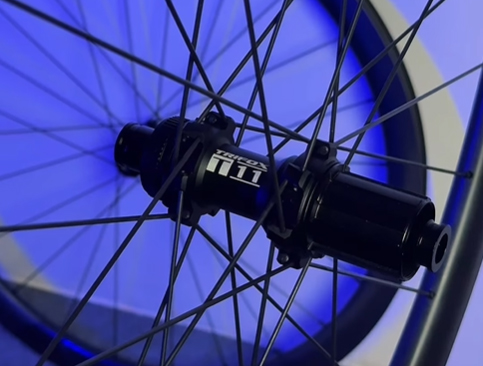
The Takeaway:
Don't overlook the hub! Match these three elements:
1. Axle Standard (Match your frame: e.g., 12x100/142mm)
2. Brake Interface (Choose CL or 6-Bolt; T11 uses CL)
3. Freehub Body (Match your cassette: T11 uses HG for Shimano/SRAM 11s & below)
Choosing correctly ensures smooth shifting, secure braking, and a hassle-free ride. The Trifox T11 exemplifies a well-specified, versatile hub for mainstream road drivetrains. Double-check your specs before you buy!
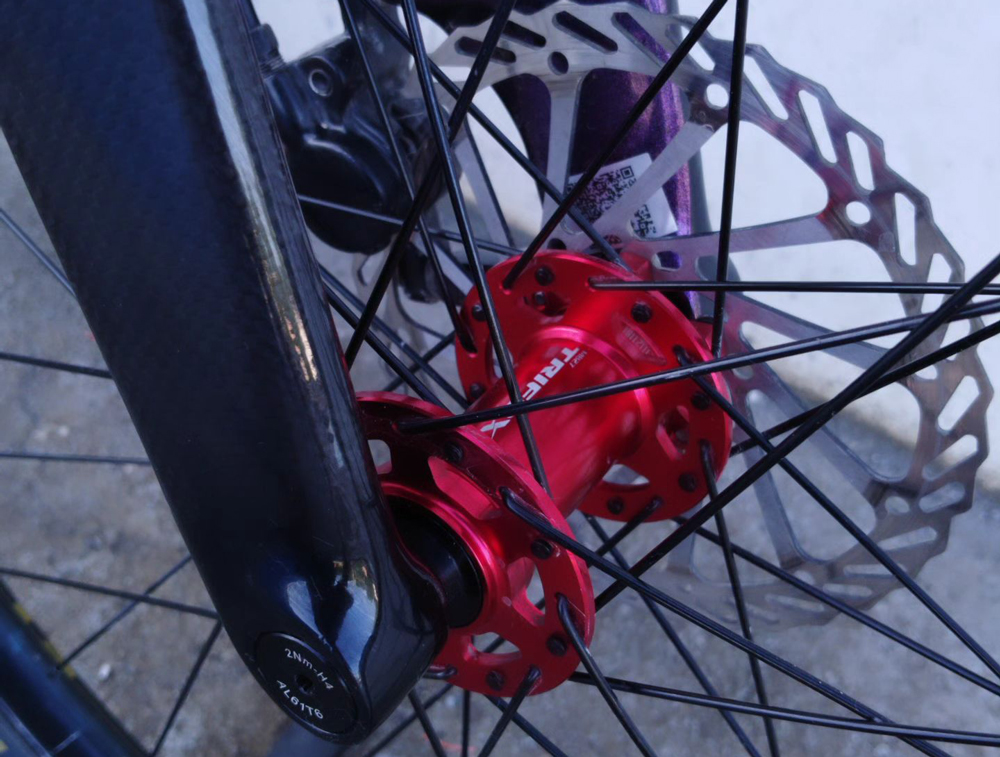
Bike hubs are the unsung heroes of your wheelset, influencing performance, durability, and ride quality. Whether you’re upgrading or building a bike, understanding the three primary hub types ensures you pick the right one for your needs.
1. Freewheel Hubs
Common on older or budget bikes, freewheel hubs feature a threaded mechanism where the gear cluster (freewheel) screws directly onto the hub. Pros: Simple design, affordable. Cons: Less durable under heavy load; replacing gears requires removing the entire freewheel. Ideal for casual riders or vintage builds but less common in modern cycling.
2. Freehub (Cassette Hubs)
The modern standard for most road, gravel, and mountain bikes. Freehubs have a splined body where the cassette slides on, with bearings housed within the hub. Pros: Stronger, easier maintenance, and compatible with a wide range of cassettes. Cons: Slightly pricier. This design dominates high-performance bikes due to its reliability and ease of upgrades.
3. Fixed Gear Hubs
Used in track bikes or “fixies,” these hubs lack a freewheel mechanism, meaning the pedals move whenever the bike is in motion. Pros: Direct power transfer, lightweight, and low maintenance. Cons: No coasting—requires constant pedaling. Popular among urban riders and velodrome racers seeking simplicity and control.
Choosing Your Hub
Your riding style dictates the best fit:
- Freewheel: Budget-friendly, low-maintenance commuting.
- Freehub: Versatile performance for most disciplines.
- Fixed Gear: Minimalist urban or track use.
Upgrade your ride with precision-engineered hubs from Trifox Bike, offering durability and smooth engagement across all types. Whether chasing speed or mastering city streets, the right hub transforms your bike's potential.
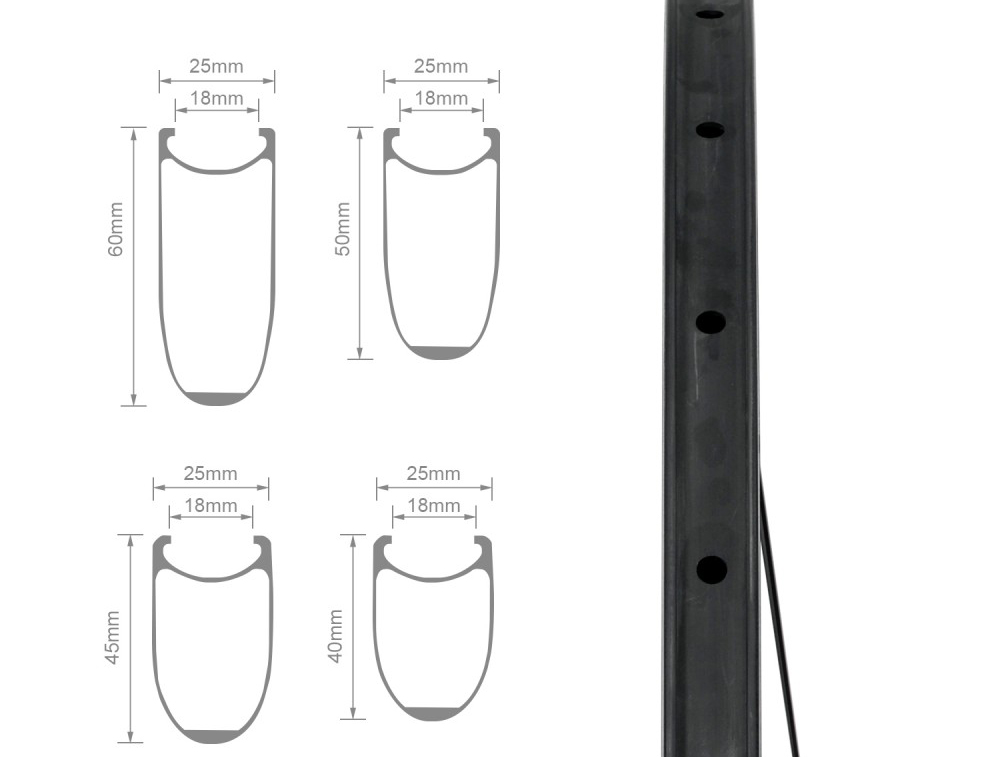
Upgrading from traditional V-brakes to disc brakes is a common question among cyclists seeking better stopping power and control. The answer? Yes, but it depends on your bike’s compatibility and budget. Let’s break down the process, costs, and whether it’s worth the effort.
Key Considerations
1. Frame & Fork Compatibility: Disc brakes require mounts (IS or Post Mount) on your frame and fork. If your bike lacks these, conversion isn’t feasible without costly adapters or replacements.
2. Wheel Compatibility: Disc brakes need hubs with rotor mounts. Your current wheels may not support this, necessitating a new wheelset.
3. Brake Levers: V-brakes use long-pull levers, while mechanical disc brakes (cable-actuated) are compatible. Hydraulic discs require dedicated levers, often meaning a new groupset.
4. Cost: Expect to spend 200
200–500+ for quality disc brakes, rotors, wheels, and labor if DIY isn’t an option.
Steps to Convert
1. Check Compatibility: Inspect your frame, fork, and wheels for disc mounts. No mounts? Consider a new fork/wheelset or stick with V-brakes.
2. Choose Brake Type:
Mechanical Discs: Affordable, easier to install, and compatible with existing levers.
Hydraulic Discs: Superior performance but require new levers and bleeding tools.
3. Upgrade Wheels: Invest in disc-ready hubs. Trifox’s lightweight carbon wheels, for example, offer durability and compatibility for smooth upgrades.
4. Install Brakes & Rotors: Attach calipers, secure rotors, and adjust pad alignment. Test thoroughly before hitting trails!
When Is It Worth It?
- Performance Needs: Disc brakes excel in wet/muddy conditions and on steep descents. If your rides demand reliability, upgrade.
- Future-Proofing: Converting lets you use modern components if you plan to keep the bike long-term.
- Frame Quality: High-end frames justify the cost; cheaper bikes may not.
Alternatives
- Hybrid Systems: Semi-hydraulic (e.g., TRP HY/RD) combines cable levers with hydraulic calipers for a middle-ground solution.
- Optimize V-Brakes: High-quality pads (e.g., Kool-Stop) and compressionless housing can improve existing V-brake performance.

Swapping V-brakes to discs is possible but not always practical. If your frame supports it and you crave all-weather reliability, the upgrade is transformative. For casual riders or incompatible bikes, stick with tuned V-brakes or consider a new disc-equipped bike. Either way, prioritize safety and compatibility—because confident braking is the foundation of every great ride.
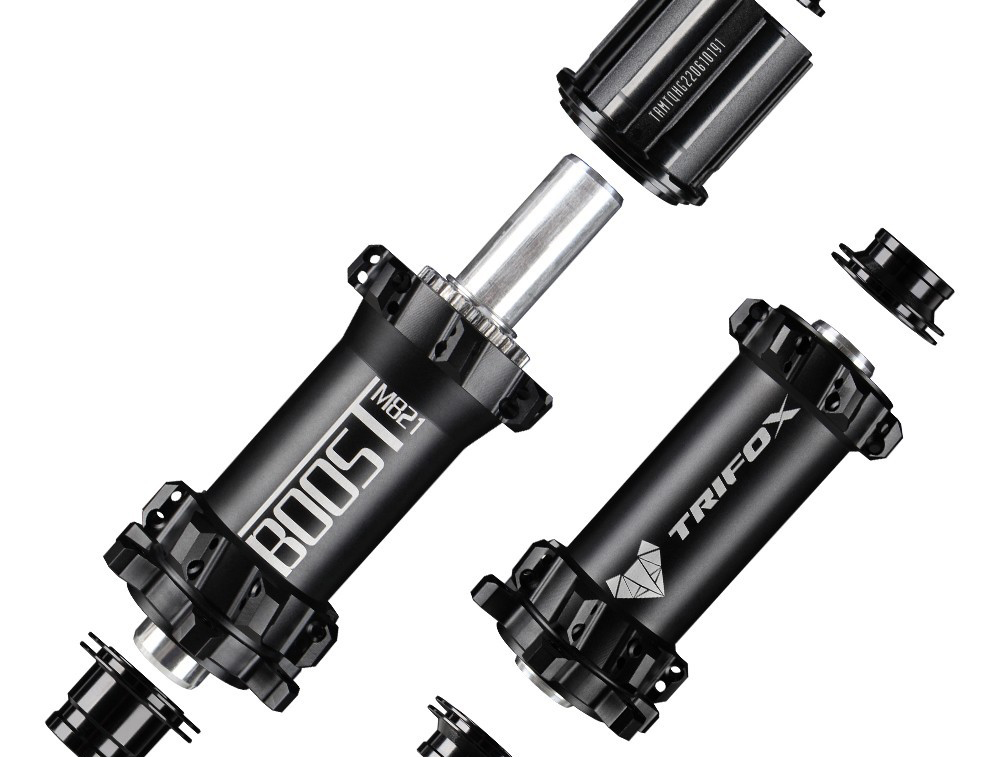
If you're eyeing a wheelset or frame upgrade, you’ve likely heard about “Boost” hubs. But is this wider hub standard (110x15mm front, 148x12mm rear) worth the investment?
What is Hub Boost?
Boost spacing increases hub width, allowing for stiffer wheels and better tire clearance. Developed for mountain biking, it enhances control on technical terrain by improving spoke bracing angles and reducing flex.
Benefits of Boost Hubs
Stiffer Wheels: Better power transfer and handling, especially during aggressive cornering or descents.
Wider Tires: Accommodates modern, plus-sized tires (2.6”+), improving traction and comfort.
Future-Proofing: Most new MTB frames and forks prioritize Boost compatibility.
When Do You Need It?
Aggressive Trail/Enduro Riding: If you’re tackling rocky descents or high-speed singletrack, Boost’s stiffness is a game-changer.
Upgrading Your Frame/Fork: Newer models often require Boost hubs. Check compatibility before purchasing.
Running Wide Tires: Boost spacing prevents chainstay rub on larger tires.
Considerations
Cost: Upgrading may require new hubs, wheels, or even a frame. The Trifox M821 offers a durable, lightweight option at a competitive price.
Compatibility: Non-Boost frames won’t fit Boost hubs without adapters (which add weight and complexity).
Riding Style: Casual riders on smooth trails may not notice a difference.
If you're into technical riding or planning a frame upgrade, Boost hubs are worth it. The stiffness and tire clearance benefits shine on rough terrain. For others, it’s a “nice-to-have” but not essential.
Ready to boost your ride? Explore the Trifox M821 Boost Hub—engineered for durability and performance without breaking the bank.
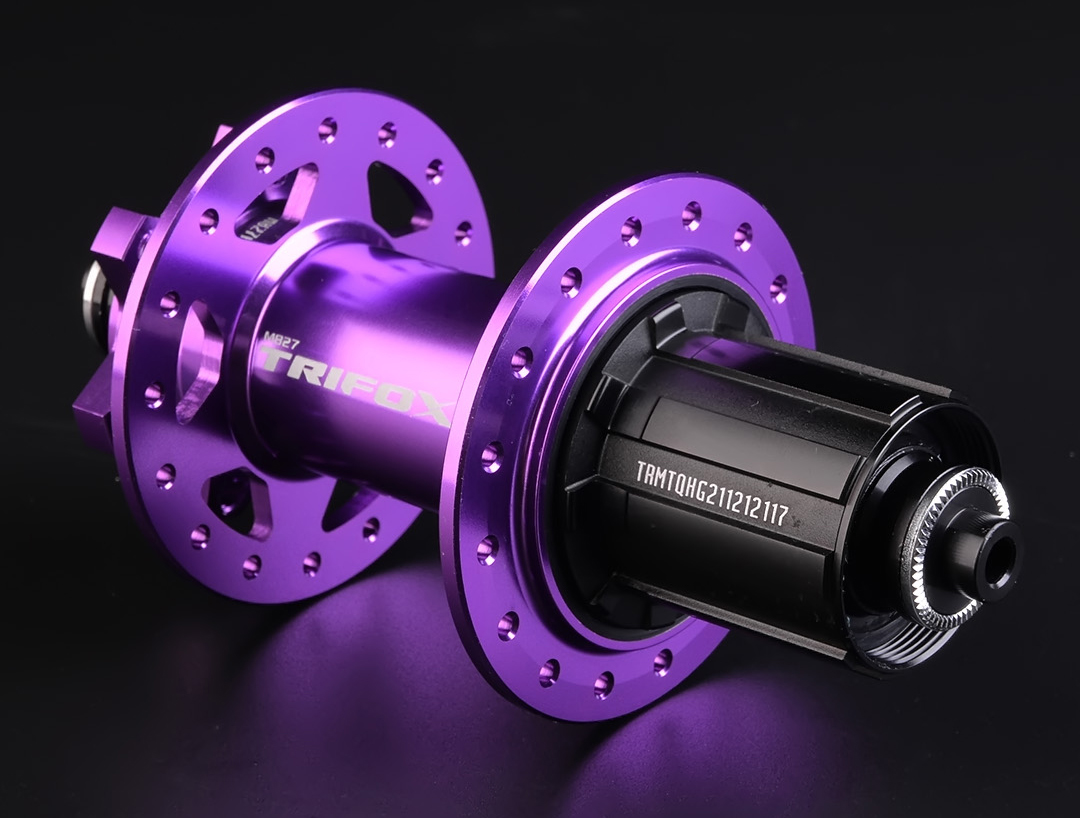
A smooth-rolling hub is critical for peak mountain bike performance. A faulty hub can lead to poor efficiency, safety risks, or even wheel failure. Here’s how to diagnose a bad MTB hub and when to consider a replacement like the Trifox M827.
Signs of a Failing Hub
1. Unusual Noises: Grinding, clicking, or rumbling sounds while pedaling or coasting often indicate damaged bearings or debris inside the hub.
2. Wheel Play: Grasp the wheel and wiggle it side-to-side. If there’s noticeable movement, the hub bearings may be loose or worn.
3. Rough Spinning: Remove the wheel and spin the axle. A healthy hub rotates smoothly. Resistance or gritty sensations suggest dirt ingress, dried grease, or bearing wear.
4. Visible Damage: Check for cracks, dents, or corrosion on the hub shell. Seals that are cracked or missing can allow contaminants to wreck bearings.
How to Diagnose
Step 1: Lift the bike and spin the wheel. Listen for noise and observe wobble.
Step 2: Check for lateral play by shaking the wheel.
Step 3: Remove the axle (if possible) to inspect bearings and races for pitting or rust.
Solutions
-Service the Hub: Clean, regrease, and adjust bearings. Replace individual parts if only certain components are damaged.
-Replace the Hub: If the hub shell is cracked or bearings are beyond repair, upgrade to a reliable model like the Trifox M827.
Why the Trifox M827?
This MTB hub is built for durability and precision:
- Sealed Bearings: Resists mud and water ingress.
- Smooth Engagement: 3-pawl design offers instant power transfer.
- Lightweight: CNC-machined alloy body reduces rotational weight.
- Boost Compatibility: Fits modern 148x12mm frames for trail-ready stiffness.
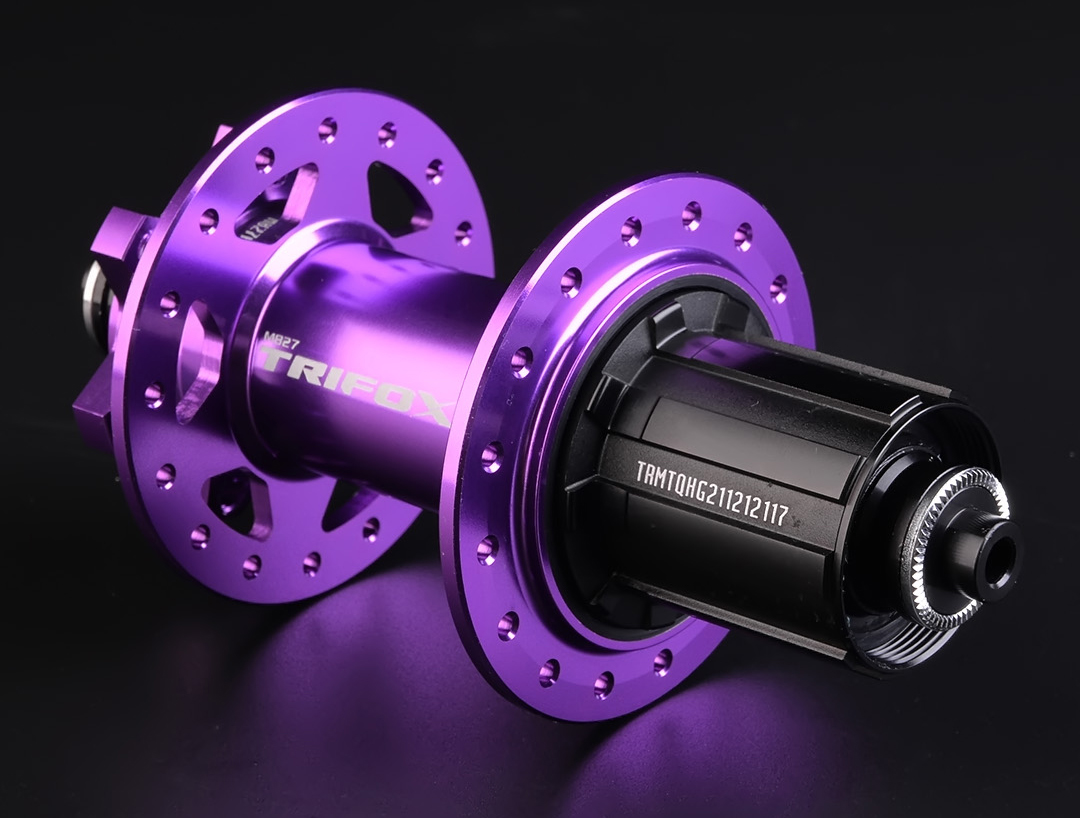
Ignoring hub issues risks ride quality and safety. Regular maintenance extends lifespan, but when replacements are due, the Trifox M827 delivers performance without breaking the bank. Don’t let a bad hub derail your ride—proactive checks keep your wheels rolling strong.
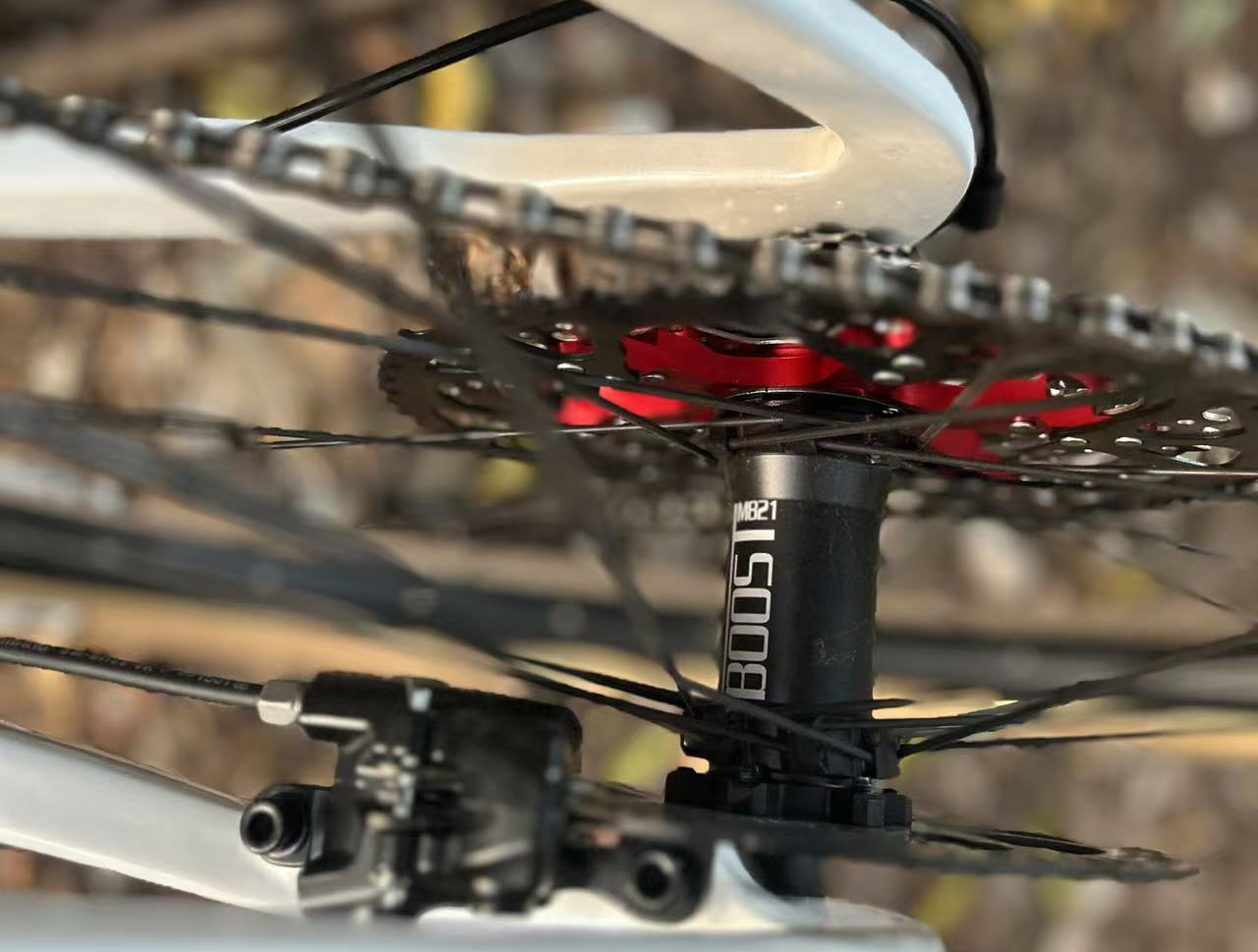
The Basics of a Bike Hub
A hub is the core part of a bicycle wheel, located at the center where the spokes connect. It houses the axle, bearings, and other mechanisms that allow the wheel to rotate freely. Hubs come in various types, including front hubs, rear hubs, and those designed for specific disciplines like road biking, mountain biking, or commuting.
Key Components of a Hub
1. Axle: The axle is the rod that runs through the hub, connecting it to the bike's frame or fork. It can be quick-release, thru-axle, or bolt-on, depending on the bike’s design.
2. Bearings: Bearings reduce friction between the hub and axle, enabling smooth rotation. They can be either loose ball bearings or sealed cartridge bearings.
3. Hub Shell: The outer shell is the part of the hub where the spokes attach. It’s typically made from lightweight materials like aluminum or carbon fiber.
4. Freehub or Freewheel: Found on the rear hub, this mechanism allows the wheel to spin independently of the pedals when coasting. Modern bikes usually feature a freehub, which integrates with the cassette.
Types of Hubs
- Front Hub: Simpler in design, the front hub connects to the fork and focuses on smooth rotation.
- Rear Hub: More complex, the rear hub includes the freehub or freewheel and is responsible for transferring power from the pedals to the wheel.
- Disc Brake Hub: Designed for bikes with disc brakes, these hubs have mounts for brake rotors.
- Internal Gear Hub: Found on some commuter bikes, these hubs contain gears inside the hub shell, offering a low-maintenance alternative to derailleurs.
Why Hubs Matter
A well-functioning hub is essential for a smooth, efficient ride. High-quality hubs reduce friction, improve power transfer, and enhance durability. They also play a role in wheel stiffness and overall bike performance. Whether you’re climbing hills, sprinting on flat roads, or navigating rough trails, a reliable hub ensures your wheels spin effortlessly.
Maintenance Tips
To keep your hubs in top condition, regularly check for play or grinding noises, which may indicate worn-out bearings. Clean and lubricate the hubs periodically, and consider professional servicing if you’re unsure about maintenance.

The hub is a small but vital part of your bike, ensuring smooth rotation and efficient power transfer. Understanding its role and keeping it well-maintained can significantly enhance your riding experience. Whether you’re a casual rider or a seasoned cyclist, a reliable hub is key to keeping your wheels—and your adventures—rolling smoothly.
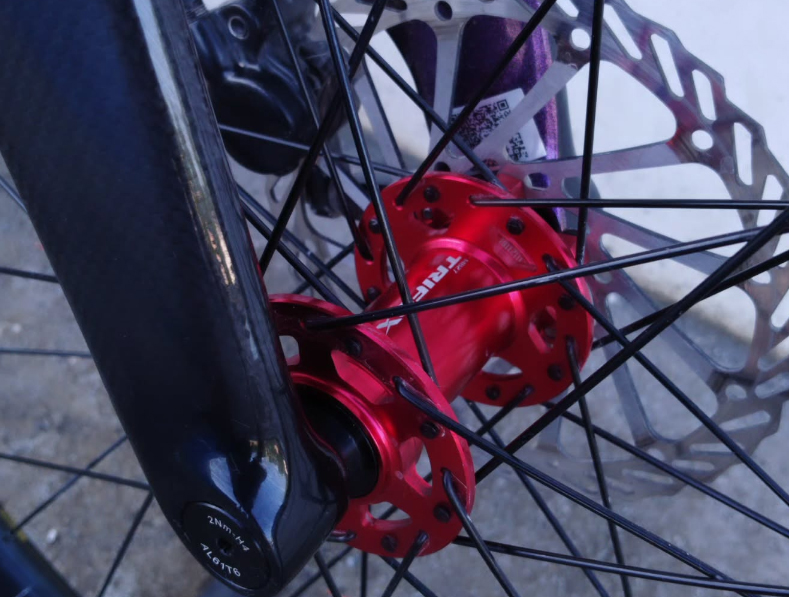
When it comes to cycling, the performance of your bike isn’t just determined by your frame or gears. The wheels play a pivotal role, and within the wheels, the wheel hubs and associated parts are often the unsung heroes of your ride. Wheel hubs are crucial to your bike’s overall performance, affecting everything from speed to handling, efficiency, and comfort.
1. Efficient Power Transfer with Quality Hubs
Wheel hubs are at the heart of your bike’s wheel system, and they play a significant role in how power is transferred from your pedals to the ground. When you pedal, the energy you generate is transmitted through the drivetrain and into the wheel hubs. A high-quality hub can efficiently transfer this energy with minimal loss, making your efforts more effective. This efficiency is essential for long rides, competitive cycling, and hilly terrain where every bit of energy counts.
For example, hubs with a higher engagement rate—meaning the number of points where the pawls inside the hub engage—provide a quicker response to your pedaling. This is particularly advantageous when you’re climbing hills or sprinting, as it allows you to accelerate faster and transfer more of your power to the road without losing momentum.
2. Smoothness and Low Friction for Better Performance
Another key factor in how hubs affect cycling performance is their smoothness and level of friction. High-quality hubs are designed to reduce friction to a minimum, ensuring that your wheels spin freely with less effort. Hubs with high-quality bearings—often ceramic or sealed ball bearings—are more efficient at reducing friction compared to low-quality bearings. This means less energy is wasted during your ride, making it easier to maintain speed, especially during long-distance rides or on flat sections of road.
Smooth-running hubs are also less prone to wear and tear, which can result in improved longevity and lower maintenance costs over time. Hubs that are built with durability in mind can handle the rigors of various terrains without compromising performance.
3. Weight Considerations for Better Handling
Wheel hubs also impact the overall weight of your bike. Lighter hubs can contribute to a faster and more responsive ride, particularly for riders who participate in competitive cycling or racing. A lightweight hub allows your bike to accelerate more quickly, especially when transitioning between gears or during a sprint. On the other hand, heavier hubs can slow you down, particularly when climbing hills or navigating tight corners.
However, it's important to balance weight with durability and strength. For instance, carbon hubs may be lighter but could be less durable on rougher terrains compared to more robust aluminum hubs. Choosing the right hub for your needs and riding conditions is essential to ensure that you don't sacrifice performance for weight savings alone.
4. Improved Braking Performance with the Right Hubs
The interaction between your hubs and brake components can significantly impact your overall braking performance. For cyclists who use rim brakes, the quality of the wheel hubs can affect how evenly and effectively your braking surfaces work. Poor-quality hubs can lead to uneven braking, while high-quality hubs ensure that the wheels are aligned correctly for smooth and consistent braking power.
For disc brake-equipped bikes, the hub's compatibility with the rotor and the ability to withstand heat buildup is equally important. A quality hub helps maintain the structural integrity of the disc brake system, reducing the risk of warping or overheating, which can compromise braking efficiency and safety.
5. Durability for Longevity
When it comes to cycling, durability is key—especially if you ride regularly or tackle rough terrain. The right hubs, built with high-quality materials and precision engineering, offer improved longevity. Hubs made from durable materials like aluminum or steel tend to be more resilient to impacts, moisture, and dirt. This is particularly crucial for off-road cyclists or mountain bikers who face harsh conditions that can wear out components faster.
Additionally, hubs with sealed bearings or internal grease systems are better at keeping out dirt and water, ensuring the hubs maintain their smoothness and performance over time. This means less maintenance and fewer repairs, allowing you to focus more on your ride and less on frequent bike tune-ups.
6. Customization for Specific Cycling Needs
One of the most attractive features of modern wheel hubs is the variety of options available for different types of cycling. Whether you're a road cyclist, mountain biker, or triathlete, there are hubs specifically designed to meet the needs of your riding style. Road cyclists may opt for lightweight hubs with quick engagement for improved acceleration, while mountain bikers might prioritize durability and the ability to handle rough terrain.
Hubs also come in different axle types and configurations, allowing you to customize your bike to fit your riding style. For instance, through-axle hubs offer increased stability and strength, particularly for off-road cycling, while quick-release hubs provide convenience for road cyclists who need to make frequent tire changes.
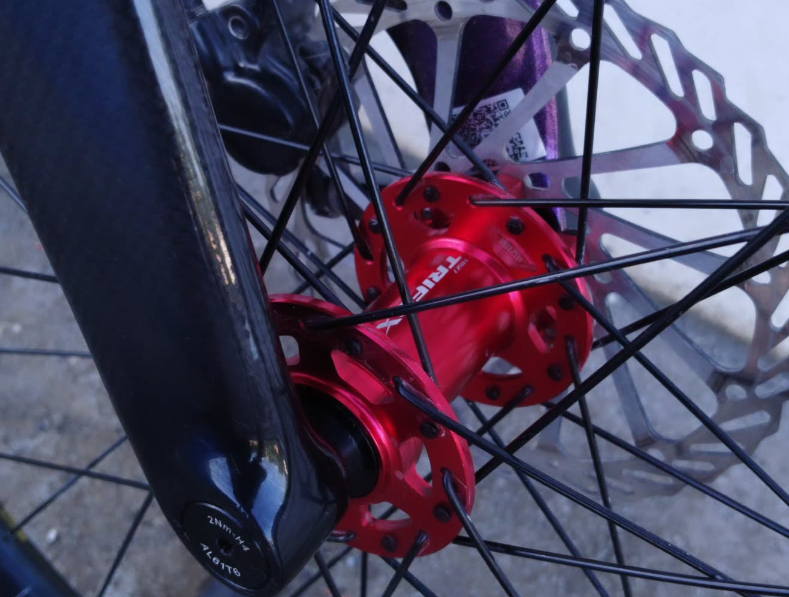
Wheel hubs and their associated parts are crucial to your bike’s overall performance. From improving power transfer and reducing friction to enhancing comfort and longevity, the right hubs can make a noticeable difference in your cycling experience.
Investing in quality wheel hubs ensures that your bike runs more efficiently, lasts longer, and delivers a smoother ride—whether you're on the road, trail, or competing in races. By understanding how wheel hubs influence your performance, you can make better choices when upgrading your bike, ensuring a more enjoyable and efficient ride every time.


























































